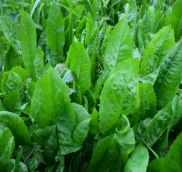Liu Minyan,Niu Shujun,Hu Guanfang,Zhao Feng and Li Yuqi
There are large areas ofBrasscia napus, Fagopyrum esculentum and F. tataricumcultivation in northwest China and north China, their seeds left in soil after harvesting emerge in the next year and turn into weeds of serious damage to linseed, and this has become a major problem in linseed production. Field efficacy trial was conducted in linseed field to evaluate control effects of four kinds of herbicides on B. napus, F. esculentum and F. tataricum. The results showed that 40% MCPA-sodium and bromoxynil octanoate EC, 25% bromoxynil octanoate EC and 80% bromoxynil SP were high-effective herbicides to control B. napus. In linseed field, the plant and fresh weight control effects were 100% after 45 days treatment at the dosages of 600, 450 and 480 g/hm2, the yield growth rate of linseed was 83.24%, 87.79% and 88.13%, respectively, the three kinds of herbicides were safe to linseed at the recommended dosages, their suitable dosages in large-scale demonstration and popularization were 600, 450 and 480 g/hm2. 40% MCPA-sodium and bromoxynil octanoate EC, 25% bromoxynil octanoate EC, 80% bromoxynil SP and 24% picloram AS were high-effective herbicides to control F. esculentum in linseed field, the plant control effects were between 90.32% to 98.07% and the fresh weight control effects were between 97.30% to 99.27% after 45 days treatment at the dosages of 660, 450. 540 and 180 g/hm2, the yield growth rates of linseed were from 87.31% to 92.80%, the four kinds of herbicides were safe to linseed at the recommended dosages, their suitable dosages in large-scale demonstration and popularization were 660, 450, 540 and 180 g/hm2, 24% picloram AS need to use protective cover nozzle for directional spray. 24% picloram AS was a high-effective herbicide to control F. tataricum in linseed field, the plant and fresh weight control effects were 91.42% and 98.71% after 45 days treatment at the dosage of 216 g/hm2, the yield growth rate of linseed was 94.24%, the herbicide was safe to linseed at the condition of directional spray using protective cover nozzle, its suitable dosage in large-scale demonstration and popularization was 216 g/hm2.
